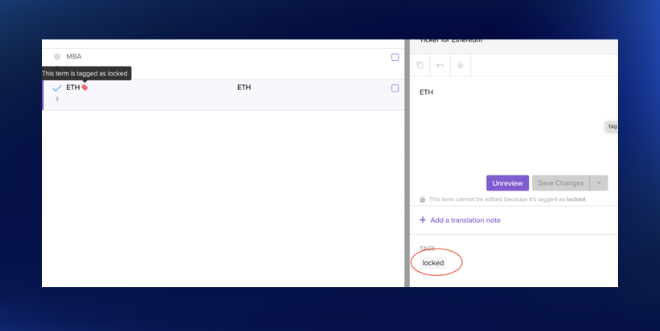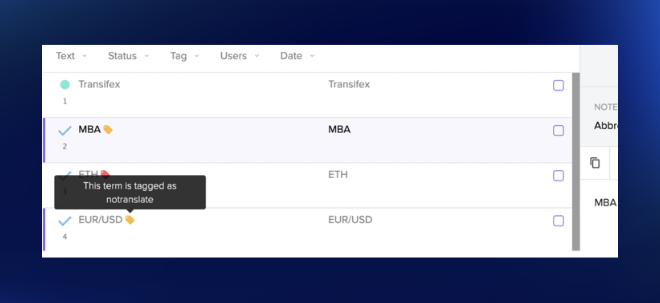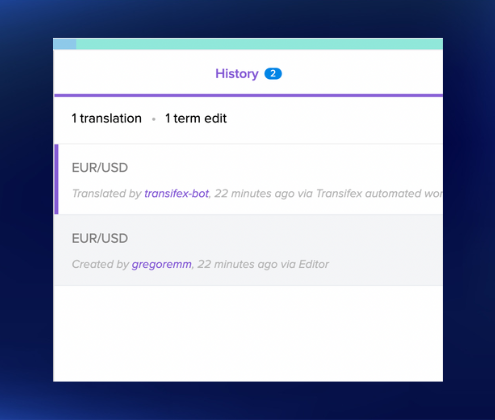
Maintain Translation Consistency With Our Enhanced Glossary
From revamping the UI to adding advanced functionalities, we’re making the glossary more powerful, so your translations are kept consistent throughout your projects.
A translation glossary ensures your translation team correctly and consistently translates certain terms the way your organization wants them to. By industry estimates, almost 15% of translation project costs arise from rework and inconsistent use of terminologies.
By creating and maintaining a comprehensive, well-structured glossary, you ensure that your product or brand is correctly represented in all languages.
That’s why we’ve been working hard to make your glossary even more feature-rich. You will now see that you can:
- Find terms quicker with advanced search filters
- Save Time By Leveraging Shortcuts
- Minimize Errors By Locking Translations
- Review Term Translations
- Ensure Cross-Language Clarity By Locking Untranslatable Terms
- Keep Track Of Term Change History
Find terms quicker with advanced search filters
Over time, a glossary can grow to hundreds if not thousands of terms. With the advanced Search Filters, you can now find terms in a fraction of the time by setting the appropriate parameters. You can filter by text, status, the newly-added tags, users, date added and many more filtering options.
Save Time By Leveraging Shortcuts
You can now quickly add new terms to the glossary simply by pressing Ctrl + n or Alt + n. This can come in handy when you want to upload terms in bulk.
Minimize Errors By Locking Translations
It’s important to convey your brand’s terminologies as consistently as possible across all your languages. Therefore, we’ve added the functionality to lock edits to the term once it’s translated. In order to do this, simply add the special tag “locked” to the desired terms.
This will lock translators from editing all target languages for that specific term. In order to restrict this functionality to a specific target language, you can use the locked_lang_code (ex. locked_it, locked_pt, locked_es_ES) instead.
Review Term Translations
As an added step, we added the capability to review the glossary term translation before publishing any changes.
Ensure Cross-Language Clarity By Locking Untranslatable Terms
Regardless of the context, there are some terms that simply are not translatable. For example, a financial app might want to keep the currency symbol “EUR/USD” untranslated throughout all target languages. The newly added “notranslate” tag does just that.
Once the “notranslate” tag is applied, translations in all languages will be replaced by the source term.
Keep Track Of Changes
Finally, you can now see the glossary term’s change history in the Glossary Editor. This is a helpful feature to fix and repair any errors or mistakes that might have occurred during translations.
Be on the lookout for more glossary enhancements soon like the ability to comment on terms, multiple variations of a term, filtering based on category issues, and more.
Related posts
Add Glossary Terms Inside the Editor
Jira Integration: Localize Faster by Automating Your Task Management












